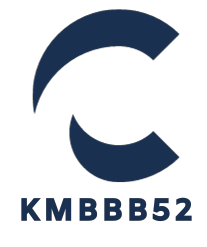Poison center software plays a critical role in modern healthcare infrastructure by supporting toxicology experts in managing exposure incidents swiftly and efficiently. As the rate of accidental and intentional poisonings continues to rise globally, having a centralized, intelligent software system to manage calls, data, and clinical information becomes essential for public health and safety poison center software. This article explores how poison center software is revolutionizing the response process, streamlining workflows, and improving outcomes in emergency toxicology.
Poison centers operate around the clock to assist healthcare professionals and the general public with information and guidance on managing toxic exposures. Traditionally, these centers relied heavily on manual data entry and telephone-based communication. However, the digital transformation in the healthcare industry has introduced sophisticated poison center software solutions that automate and centralize these tasks. These platforms integrate toxicology databases, case management tools, and communication systems into a single interface, significantly reducing response times and minimizing human error.
One of the most valuable features of poison center software is real-time case tracking. When a call is received, the software enables staff to log patient symptoms, suspected substances, dosage levels, and other vital details immediately. Automated alerts guide specialists toward recommended protocols or highlight any need for escalation. By creating structured records, the system ensures all essential data is captured for future review and compliance.
Additionally, poison center software enhances decision-making by integrating with toxicology databases. These systems provide immediate access to vast repositories of information on hazardous substances, pharmaceutical interactions, and antidote recommendations. With artificial intelligence and natural language processing capabilities, the software can suggest likely toxic agents based on symptoms and exposure routes. This feature is particularly beneficial in cases where the poison is unidentified or when the patient is unconscious and unable to communicate.
Reporting and analytics functionalities are another cornerstone of modern poison center systems. Public health agencies often require statistical data on poison exposure patterns, regional trends, and demographic breakdowns. Poison center software can generate customized reports and visual dashboards that provide actionable insights for prevention programs and policy development. These analytics tools also help poison centers identify recurring incidents or spikes in specific toxic exposures, such as drug overdoses or chemical spills, allowing them to alert relevant authorities quickly.
Security and compliance are critical considerations when selecting a poison center software solution. These systems handle sensitive health information and must comply with strict data protection regulations. Top-tier software is built with robust encryption, access controls, and audit trails to ensure confidentiality and prevent unauthorized access. Many platforms are designed to meet HIPAA or GDPR standards depending on their geographic deployment.
Interoperability is another key advantage of advanced poison center software. These systems can integrate with hospital information systems, emergency medical services, and public health databases. Such connectivity allows for seamless information sharing between poison centers and healthcare providers, improving patient care coordination. For example, if a poison center identifies an unusual cluster of cases in a specific location, the software can share this intelligence with nearby hospitals and government health departments in real time.
User-friendly interfaces are also an important design element of poison center software. Specialists working under pressure need intuitive systems that minimize learning curves and reduce cognitive load. Modern solutions often feature customizable dashboards, voice-to-text input, automated coding, and multi-language support. These elements allow toxicologists to focus on critical thinking and patient outcomes rather than data entry and navigation.
Training and support are vital to the successful implementation of poison center software. Vendors typically provide onboarding, user manuals, and continuous technical assistance to ensure that all users can operate the system effectively. Continuous updates also ensure that the software remains compatible with the latest medical guidelines, databases, and operating systems.
In conclusion, poison center software is a game-changer in the toxicology and emergency response sectors. By combining automation, artificial intelligence, secure data handling, and real-time communication, these platforms empower poison specialists to act swiftly, accurately, and efficiently. As healthcare systems continue to embrace digital transformation, poison centers equipped with cutting-edge software will remain at the forefront of safeguarding communities from toxic hazards.
